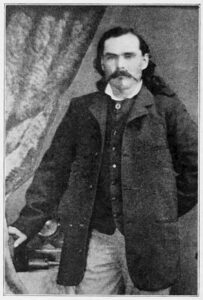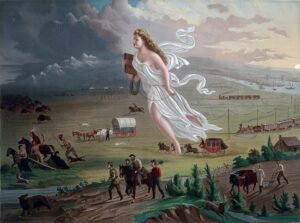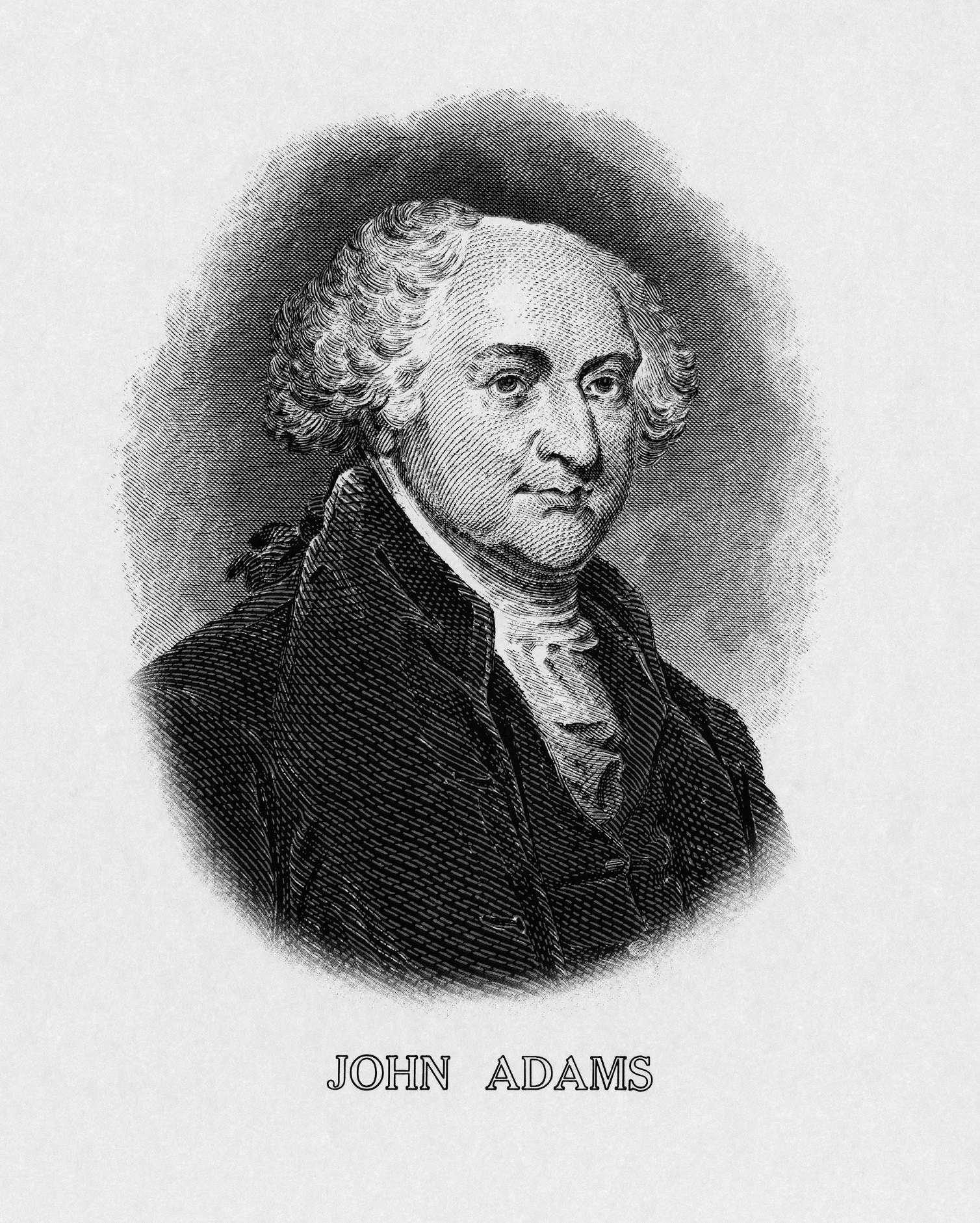
Introduction
In the heart of the Massachusetts countryside, amidst the rustling fields and the whispers of history, a young John Adams embarked on a journey that would shape the destiny of a nation. With dreams as vast as the endless horizon, Adams soared from humble beginnings to become a formidable force in the annals of American history. John Adams became a visionary statesman and instrumental key architect of the nation’s foundation. From his fiery rhetoric that ignited a revolution to his resolute leadership as the second President of the United States, Adams’ life unfolded like a symphony of passion, ambition, and unwavering patriotism and stands as a testament to the power of determination and the enduring pursuit of a just society.

Youth
John Adams was born on October 30, 1735, in Braintree, Massachusetts (now known as Quincy). He was the eldest son of John Adams Sr., a farmer, and shoemaker, and Susanna Boylston Adams. Adams grew up in a family deeply entrenched in Puritan values and the ideals of hard work, education, and community service.
He attended local schools in Braintree, where he received a solid education in literature, mathematics, and classical languages. Adams’ father recognized his son’s intellectual potential and ensured he had access to books and a supportive learning environment.
The Adams family’s Puritan background greatly influenced John Adams’ upbringing. The Puritan values of discipline, moral integrity, and a strong work ethic shaped his character. These values emphasized the importance of personal responsibility and civic duty, principles that Adams carried with him throughout his life. John often accompanied his father to town meetings and observed the local political process. These early experiences sparked his interest in politics and the law, setting the foundation for his future career as a statesman and lawyer. Adams excelled academically, graduating from Harvard College in 1755. His studies of political philosophy and Enlightenment ideals would later shape his convictions and guide his path as a statesman.
The values instilled in him during his formative years, along with his thirst for knowledge and sense of civic duty, propelled him towards a distinguished career dedicated to serving his country and pursuing liberty and justice.
The Revolution
During the American Revolution, John Adams blazed a trail that would forever alter the course of history. Adams emerged as a resolute champion of independence. Adams’ words ignited a fervor for self-governance, emboldening a nation to rise against tyranny. Adams served as a delegate to the Continental Congress, a governing body that played a crucial role in the Revolution. He ardently argued for independence and rallied support for the cause among fellow delegates and was a member of the committee assigned to draft the Declaration of Independence.
Adams undertook diplomatic missions during the Revolution. He traveled to France and the Netherlands to secure foreign aid and support for the American cause. His efforts helped forge crucial alliances and garner vital resources for the American Revolution. Adams also advocated establishing a professional Continental Army, recognizing the need for a well-trained and equipped force to counter British military power. He supported the appointment of George Washington as the army’s commander-in-chief and worked to ensure its continued support.
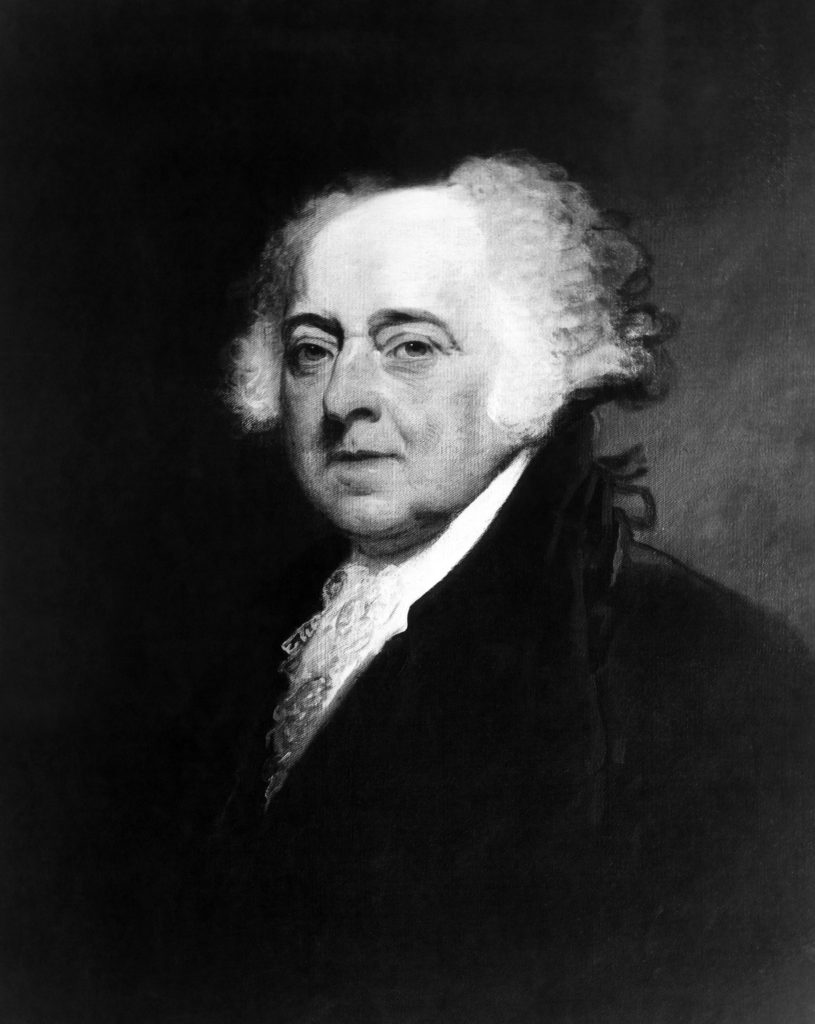
Presidency
In 1797, John Adams assumed the presidency, succeeding George Washington. Adams faced numerous challenges during his tenure, including strained relations with France and political divisions within the country. However, he successfully navigated these tumultuous waters, preserving American sovereignty and promoting economic stability. Adams also played a pivotal role in establishing the United States Navy, which bolstered national defense and safeguarded American interests abroad.
As President, John Adams left an enduring legacy that shaped the future of the United States. His commitment to democracy, the rule of law, and individual rights laid the groundwork for the nation’s constitutional framework.
Adams successfully navigated a period of tense relations with France, known as the Quasi-War. Through diplomacy and negotiations, he avoided full-scale conflict and safeguarded American sovereignty, securing the nation’s independence and integrity.
Adams played a pivotal role in establishing the United States Navy. By expanding the naval fleet, he bolstered national security, protecting American interests and projecting strength on the international stage. At the same time, Adams prioritized economic stability and growth. He implemented sound fiscal policies to stabilize the nation’s finances and encourage trade. Adams also signed the Treaty of Amity, Commerce, and Navigation with Great Britain, which opened up new trade opportunities and helped revitalize the American economy.
Adams’s appointment of John Marshall, a renowned jurist, and statesman, as the Chief Justice of the Supreme Court helped shape American constitutional law and solidify the judiciary’s role in the balance of powers.
President John Adams recognized that an informed populace was essential for the nation’s progress. Throughout his time as President, he emphasized the importance of education as a cornerstone of a thriving democracy. He called for establishing public schools and universities to provide accessible education for all citizens, recognizing that an informed populace was essential for the nation’s progress.
Post Presidency
John Adams left the presidency on March 4, 1801. This marked the end of his term as the second President of the United States, serving from March 4, 1797, to March 4, 1801. Thomas Jefferson succeeded him.
Following his political retirement, Adams returned to his home in Quincy, Massachusetts. He devoted much of his time to writing, documenting his experiences and reflections on the American Revolution and the nation’s founding. Adams penned extensive correspondence with friends and political allies, leaving behind a rich collection of letters that provide valuable insights into the era. One of these friends was Thomas Jefferson. Despite their political differences, Adams and Jefferson rekindled their relationship in their later years, exchanging nearly 160 letters. Their correspondence touched on a wide range of topics, including philosophy, politics, and the legacy of the American Revolution, leaving a profound intellectual legacy for future generations.
Adams actively supported the establishment of public education systems, championed educational reforms, and took great interest in preserving historical documents and artifacts related to the American Revolution and the nation’s founding.
John Adams remained active and engaged in public affairs until his death on July 4, 1826, coinciding with the 50th anniversary of the Declaration of Independence.
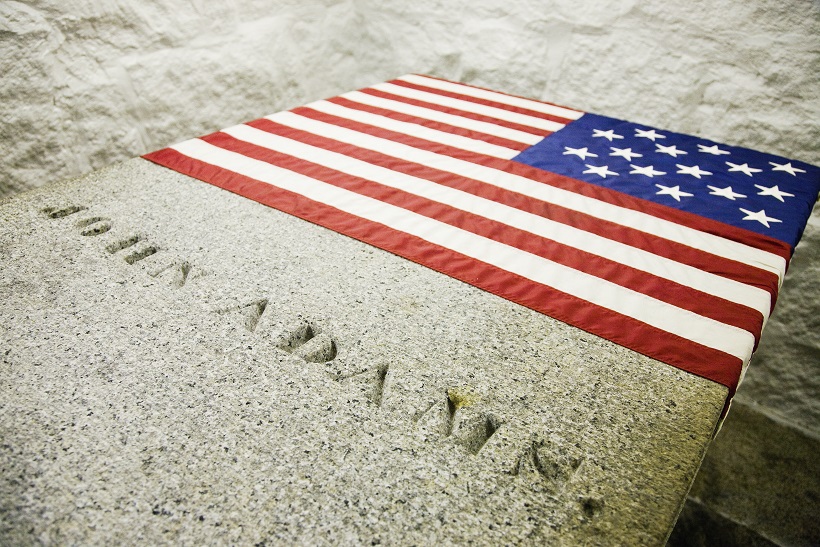
Death
John Adams, the second President of the United States and a prominent Founding Father, passed away on July 4, 1826, at the age of 90, on the 50th anniversary of the adoption of the Declaration of Independence (Link to his gravesite here).
In the final days of his life, Adams had been experiencing declining health. On the morning of July 4, 1826, he uttered his last words, reportedly saying, “Thomas Jefferson survives.” Unbeknownst to Adams, his fellow Founding Father and political adversary, Thomas Jefferson, had also passed away earlier that same day.
John Adams died peacefully in his home in Quincy, Massachusetts. His passing marked the end of an era, as two influential figures of the American Revolution and early American government departed the world on the same historic day.
News of Adams’ death spread quickly throughout the country, and the nation mourned the loss of this esteemed statesman and patriot. Tributes poured in from all corners, with Americans reflecting on Adams’ significant contributions to the nation’s founding and his unwavering commitment to principles of liberty, justice, and democratic governance.
Conclusion
Today, the death of John Adams stands as a poignant reminder of the remarkable generation of leaders who risked everything to create a new nation. His passing serves as a testament to the legacy he left behind and his lasting impact on the United States, forever etched in the annals of American history.
A visionary and unwavering patriot, Adams left an indelible imprint on the tapestry of American history. From humble beginnings to the presidency, he personified an unyielding commitment to liberty, justice, and the essence of democratic governance. As a Founding Father and the second President, Adams’s influence resonates through the very soul of the nation he helped forge.
His legacy, a timeless testament to the power of individual conviction, inspires generations to pursue justice and strive for a more perfect union. Adams, an emblem of courage, intellect, and unrelenting dedication, eternally reminds us of the boundless potential of one person’s impact on shaping history’s course.
In the symphony of American history, John Adams remains an enduring melody of inspiration. His life’s opus urges us to embrace the mantle of citizenship, upholding the values that define our democracy while charting a path toward a more inclusive and equitable society.
John Adams, a luminary among statesmen, beckons us to seize the spirit of unwavering commitment and the relentless pursuit of freedom that he embodied. As we pay homage to his memory, let us rise to the challenge, using his legacy as a compass to guide our journey toward a brighter future for all.
Further Research
Knowing the Presidents: John Adams | Smithsonian Institution
Founders Online: The Adams Papers (archives.gov)
John Adams | Biography, Political Party, Children, Presidency, & Facts | Britannica
Plan Your Visit – Adams National Historical Park (U.S. National Park Service) (nps.gov)
